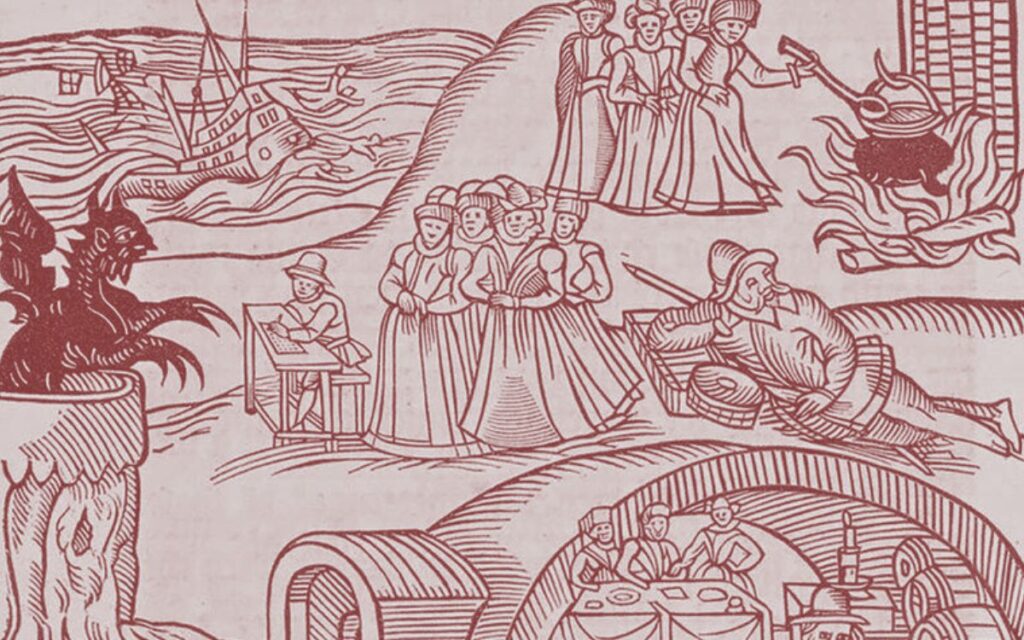Aberdeen’s witch trials of the 1597, fuelled by fear and King James I’s Daemonologie, led to 23 executions, writes JOANNE LAVENDER

Aberdeen, 16th century Scotland, nation and city ablaze with the fires of zealous persecution and the application of what was perceived to be justice.
The persecution and prosecution of those allegedly practising witchcraft in Aberdeen began during The Aberdeen Witchcraft Trials of 1596-1597.
Further fuel was added to the flames of fear and suspicion by the publication in 1597 of “Daemonologie”, written by King James 1 of Scotland, “a dissertation on contemporary necromancy” that endorsed the practice of witch hunting.
The book begins:
“The fearful aboundinge at this time in this country of these detestable slaves of the Devil, the witches or enchanters,have moved me (beloved reader) to dispatch in post, this following treatise of mine ….to resolve the doubting both that such assaults of Satan are most certainly practised, and that the instrument thereof merits most severely to be punished”
This conflagration of abject terror climaxed in 1597 when, in Aberdeen alone, 45 women and two men stood accused of having made pacts with the Devil.
Of this number, 22 women and one man were executed.
Most notably amongst those condemned to death was one Janet Wishart (also known as The Great Witch of Scotland) and her son Thomas Leyis.
Accusations levelled against the pair included dancing with the Devil around the town cross on Halloween, using ligature to make married men untrue to their wives, souring milk, bewitching animals, giving love charms of bent pennies tied in a cloth with a piece of red wax.
Janet was accused of bewitching a certain Alexander Thomson , and similarly Andrew Webster, so that alternating shivering and sweating caused death.
Apparently she raised storms by throwing out live coals, sent nightmare cats to cause horrible dreams, and dismembered a corpse hanging on the gallows in order to use its body parts in her potions and spells.
She was found guilty and burned with another witch at the cost of 11 pounds and 10 shillings which was to cover the cost of the peat, tar and coals as well as payment for the executioner.
Aberdeen city records note that it cost three pounds 13 shillings and four pence for Leyis’s pyre.
The city executioner would kill four witches a day for one pound six shillings and eight pence.
Most witches were strangled and then burnt, a few were burnt alive.
Burning was considered to be an essential part of the procedure even if the person had already been killed by another method since it was believed that if the body, although already lifeless, was cremated that person would not then be able to rise from the grave on the Day of Judgement, and consequently would not be able to have the sins forgiven them by God and so would be doomed to eternal damnation.
Janet’s death took place at Mercat Cross, Aberdeen in 1595. Time has not erased the horror of her merciless execution for an impossible crime at the hands of a group of people stampeded by a combination of unbridled panic and superstition. Although a few victims were male, it is very likely that misogyny was to blame for many groundless accusations.
The majority of those accused and eventually murdered in the name of the law were elderly, sick old women. These women were frequently considered a nuisance by the neighbors if they came to the door asking for help in some way. However, very often it was to these same sick and elderly women that many turned when they were in need of help, especially medical care, themselves.
Tell us your thoughts of these Aberdeen Witch Trials in the comment sections below!







